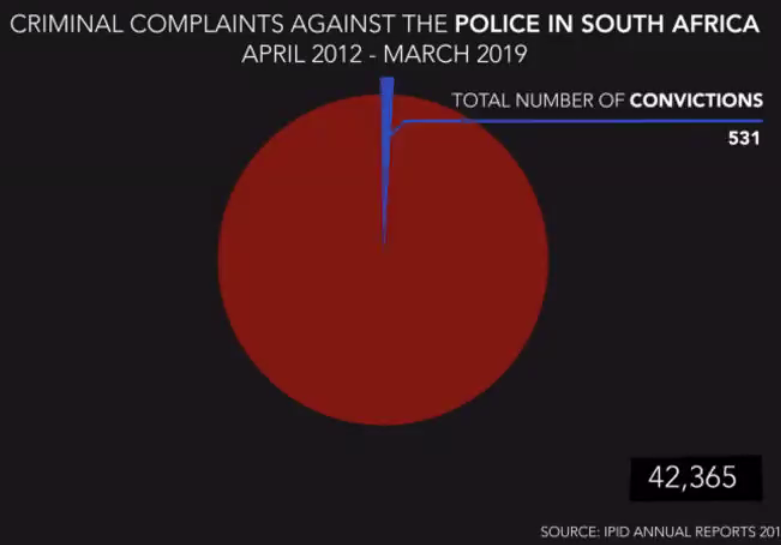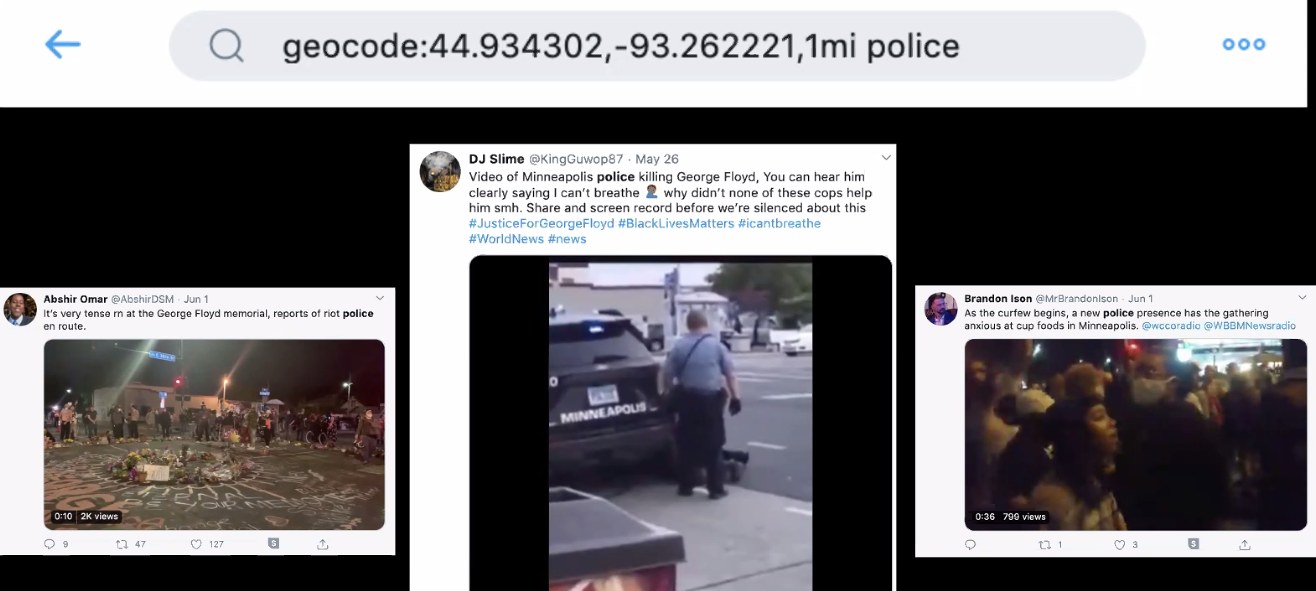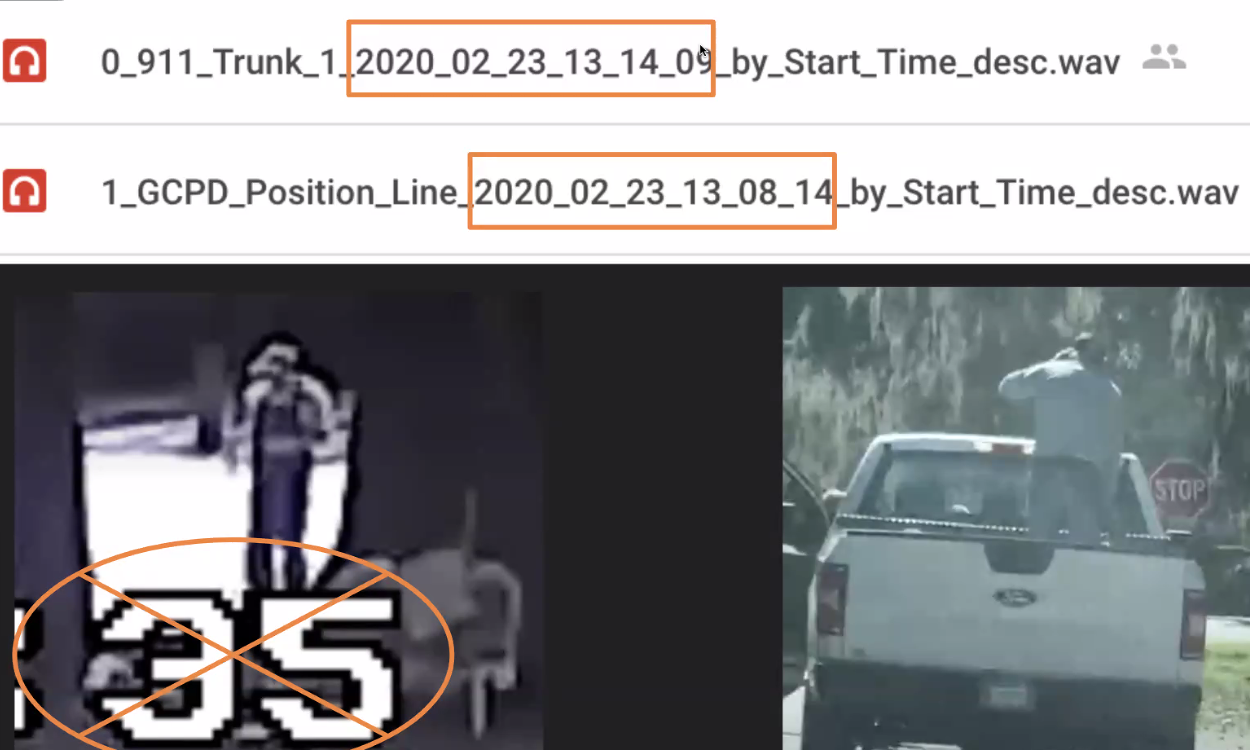The visual investigations team at the New York Times began their probe into the killing of George Floyd in the US with the simplest strategy: zooming in on Google Maps, and then calling nearby businesses listed there to ask for their CCTV footage.
In a GIJN webinar on investigating the police — held October 22, the day after the massacre of anti-police brutality protesters in Nigeria — Times reporter Haley Willis explained that the team then used time stamps from this footage to search a police scanner archive, Broadcastify, to find the chatter from the street on that tragic evening in Minnesota in May.
This showed that officers told a dispatcher of a “Code 3” medical emergency for Floyd at 8:21 p.m. — and yet video showed that one officer continued to kneel on the stricken man’s neck until 8:28 p.m. He died soon afterward.
Willis was joined by investigative journalists from Tunisia, South Africa, and her own team on a panel that shared powerful tools and tips for gathering and analyzing evidence on police misconduct.
[Read more: Tips for reporting on anti-police violence protests in the U.S.]
“A data reporter once told me that if you see an official table on police misconduct, you’ve got to assume there’s a rich, nuanced database behind it,” said Daneel Knoetze, founder of the South African accountability nonprofit Viewfinder. “That was one of the most amazing tips because it led me to find contacts within the police investigative directorate to gain access to their source data.”
For Amal El Mekki, editor-in-chief of Tunisia-based story platform Innsane, the process starts with public records requests and the courage to hold law enforcement bodies to account.
Meanwhile, Pulitzer Prize winner Malachy Browne, senior story producer for The New York Times’ visual investigations team, said these projects hinge on being organized at every stage — from gathering evidence on social media, to editing audio and video on a split screen, to locating events in time and space.
Here are 10 of our panel’s key tips:
- Find evidence about police action by identifying relevant Twitter lists, by adding keywords after site:twitter.com/*/lists, and merge with your own via Twitter List Copy. For real-time crisis video searches of SnapChat, YouTube, and Twitter, try Samdesk, and try Dataminr for breaking news posts that are searchable by region.

[Read more: Rethinking how we talk about police]
- Focus on systemic failures and policy mistakes, rather than simply the “bad apple” officers. Investigate those charged with investigating police misconduct, like internal investigations directorates or internal affairs units — and check whether their performance is measured by conviction or misconduct rates, or merely by the number of cases closed. Knoetze says that while few see themselves as whistleblowers, many internal investigators will assist reporters out of a sense of frustration or justice.
- For police audio — and to better understand what police and dispatchers were thinking at crucial moments — check if your country has an app that records communications. In the US, try Broadcastify and OpenMHZ, which offer both live and archived feeds. The 5-0 Radio Pro app for mobile offers live radio feeds from about 30 countries.
- To find video of earlier police incidents, try keywords with site:youtube.com on Google, and then limit the date range to the day of the incident, and the day after, under the Tools icon. The search function on InVid can target post times on Twitter more accurately than Twitter’s search can.
- Focus your social media evidence search on the platforms and language most used for crisis events in the area. For instance, Willis says users in Hong Kong often post video to Telegram and LIHKG. Try the Telegago app to search Telegram, or tgstat.
- When law enforcement bodies do release simple charts on police misconduct, assume that there is likely a rich, detailed database on incidents and complaints behind it, and go after that data. And build relationships with victims’ families.

- Pin the incident on Google Maps to start your investigation — both to get a geocode to find local tweets on TweetDeck, and to find nearby businesses that might have CCTV footage of the scene. Call them all. If stores initially decline, send them a copy of your initial story on the incident and then call to ask for the CCTV footage again. Try the geocode in TweetDeck followed by a comma and a radius, like “1mi”, and a term like “police” or “cops”.
- Synchronize video clips without audio — like CCTV — to any clip that does have audio, like livestreams and camera phones, with visual markers like flashing lights and footsteps.
- Where users grant permission, illustrate your story with video clips from social media, adding brief explanations and light graphics, like circles or arrows, to make it clear.

- Create accurate and contextualized timeline narratives by pairing the time stamps on 911 call files shared by police with video evidence of people making those calls. The time it takes for people to pick up their phones and put them down again on continuous video can also be matched to the length of those 911 audio files. Other loud sounds overheard on emergency calls — like slammed car doors, or even gunshots — can also help build event timelines.
For more on visual forensic methods to investigate security forces, see GIJN’s in-depth guide here.
This article was originally published by the Global Investigative Journalism Network (GIJN).
Rowan Philp is a reporter for GIJN. He was formerly chief reporter for South Africa’s Sunday Times. As a foreign correspondent, he has reported on news, politics, corruption, and conflict from more than two dozen countries around the world.

